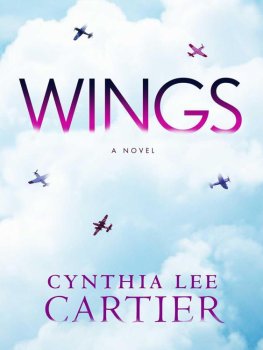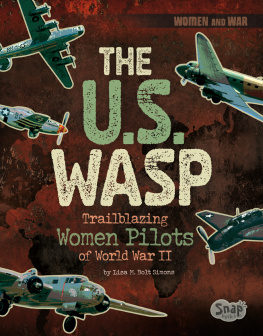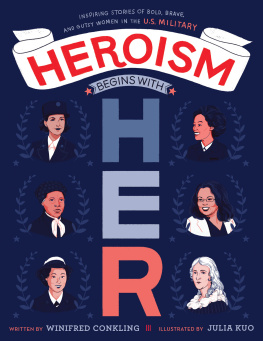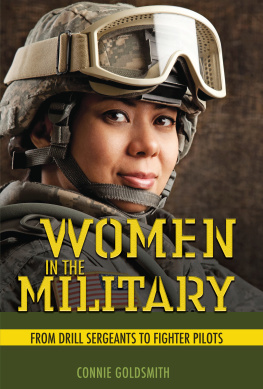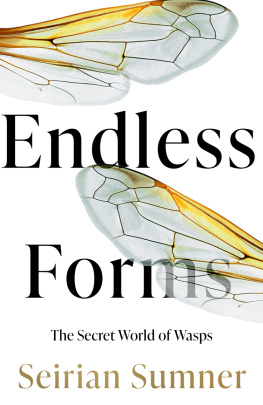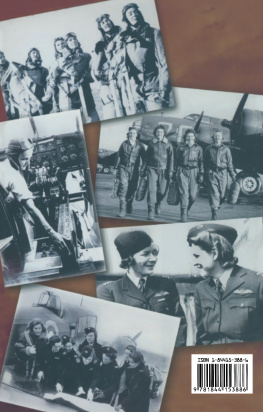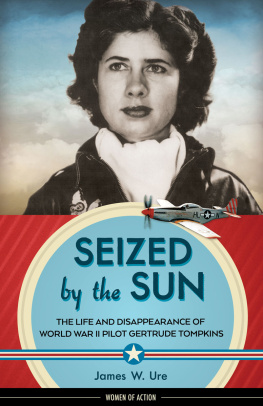Thank you for buying this ebook, published by NYU Press.
Sign up for our e-newsletters to receive information about forthcoming books, special discounts, and more!
Sign Up!
About NYU Press
A publisher of original scholarship since its founding in 1916, New York University Press Produces more than 100 new books each year, with a backlist of 3,000 titles in print. Working across the humanities and social sciences, NYU Press has award-winning lists in sociology, law, cultural and American studies, religion, American history, anthropology, politics, criminology, media and communication, literary studies, and psychology.
Clipped Wings
Clipped Wings
The Rise and Fall of the Women Airforce Service Pilots (WASPs) of World War II
Molly Merryman
NEW YORK UNIVERSITY PRESS
New York and London
1998 by New York University
All rights reserved
Library of Congress Cataloging-in-Publication Data Merryman, Molly.
Clipped wings : the rise and fall of the Women Airforce Service Pilots (WASPs) of World War II / Molly Merryman.
p. cm.
Includes bibliographical references and index.
ISBN 0-8147-5567-4 (alk. paper)
1. Womens Air Service Pilots (U.S.) 2. World War, 1939-1945Participation, Female. 3. Women air pilotsUnited StatesHistory. 4. World War, 1939-1945Aerial operations, American. I. Title.
D810.W7M44 1997
940.544973dc21 97-21217
CIP
New York University Press books are printed on acid-free paper, and their binding materials are chosen for strength and durability.
Manufactured in the United States of America
10 9 8 7 6 5 4 3 2 1
To the Women Airforce Service Pilots, who recognized the value of their history and worked to preserve it, and who, despite cultural denial for thirty years, maintained their worth, their history, and their identity, giving their all to us.
Illustrations
All photographs appear as a group following .
Acknowledgments
This project was made possible by the interests and efforts of many. Those who were involved with my dissertation (the first draft of this book) at Bowling Green State University deserve recognition for their guidance and support. They include my advisor, Ellen Berry, and committee members William Grant, Alberto Gonzalez, and Karen Gould. Arlene Spoores of Womens Studies, Joan Conrad of American Culture Studies, and Carol Davis of Research Services also lent their support and attention to many facets of this project. Recognition also goes to Bowling Greens Graduate College for the Dissertation Support grant and the American Culture Studies program for the non-service fellowship, both of which made research travel possible. I also extend my thanks to the staff and volunteers of the United States Air Force Museum Archives, the Eisenhower Center, the Texas Womens University Archives, and the International Womens Air and Space Museum for maintaining invaluable records on the Women Airforce Service Pilots and for capably and courteously making those records available. I also extend my sincere respect and gratitude to the many WASP veterans I have come to know. I cannot list them all, but one veteran, Marty Wyall, deserves special recognition for the tireless years she devoted to maintaining WASP history and documents. Thanks also to Tom Baumann, my documentary partner and friend, who provided good ideas and didnt mind my asking questions that were of use only for this project during the shooting sessions for Women Who Flew. Dave Menard of the Research Division, United States Air Force Museum, Wright-Patterson Air Force Base, deserves mention for his detailed proofreading and expert identification of airplanes and their markings. Ben Urish of Temple University offered an inspiring internet dialogue on cultural history and a thorough proofreading of the first draft. Cheryl Shaw of Kent State University offered her superb typing skills in deciphering three pads of handwritten notes. I want to thank my editors at New York University Press, beginning with associate editor Jennifer Hammer, who has believed in and supported this project since its inception; Despina Papazoglou Gimbel, managing editor; and David Updike, the copyeditor. Finally, I express my dedicated gratitude to my family, without whom none of this would have been possible: my father, Ralph Merryman, whose stories about his experiences in the Army Air Forces China-Burma-India Theater during World War II helped inspire my interest in this topic; my mother, Rose Fulop Merryman, who shared stories about the perspective of women during the war years and who accompanied me during part of my research travels, thus providing me with memories of her I shall forever treasure; and my sister, Rebecca Merryman, who offered emotional support and encouragement.
Abbreviations
AAF | Army Air Forces |
ATA | Air Transport Auxiliary |
ATC | Air Transport Command |
CAA | Civil Aeronautics Administration |
CAP | Civilian Air Patrol |
VFW | Veterans of Foreign Wars |
WAAC | Womens Auxiliary Army Corps |
WAAF | Womens Auxiliary Air Force |
WAC | Womens Army Corps |
WAFS | Womens Auxiliary Ferrying Squadron |
WASP | Womens Airforce Service Pilots |
WAVES | Women Accepted for Volunteer Emergency Service |
WFTD | Womens Flying Training Detachment |
WTS | War Training Service |
1 Introduction
This book examines the accomplishments and struggles of the Women Airforce Service Pilots (WASPs) of World War IItheir service, their premature disbandment, and how they finally got some of the recognition they deserved. The events, perceptions, and opinions that culminated in the disbandment of the WASPs are contextualized within theories of feminist history and gender construction in order to reveal how cultural constructions of gender, specifically assumptions about the roles of women in war, impacted the fate of the 1,074 pilots who served their country as the first women to fly military planes.
The purpose of this book is to provide answers to questions that have been raised for more than fifty years: Why were the WASPs disbanded when there was still a wartime need for their services? Why did the top officials of the Army Air Forces allow the disbandment to occur? Why did Congress, which authorized militarization for the womens branches of the Army, Navy, Marines, and Coast Guard, not only refuse to do so for the WASPs, but also vote to disband the entire program, even while the United States was still fighting a world war?
In order to address these questions and reveal important details about the WASPs, military documents from four archives, many of which were not declassified until the 1980s, were examined. These documents include memorandums and proposals for the program, which began as a top secret initiative; reports from numerous bases at which WASPs served, which detailed their status in a range of missions and offered overall evaluations of the program; and legal treatises that revealed the Army Air Forces stance on the congressional hearings regarding the militarization of the WASPs. Print media sources, including articles specific to the WASPs as well as wartime issues of popular magazines, were examined to assess how the WASPs and other women in the wartime effort were being presented to and perceived by the public. Congressional records were obtained for 1941 through 1977 to document not only how Congress voted on the WASP issue, but also how it debated and voted on other womens military auxiliaries during and after the war. Finally, women who served as WASPs during World War II were interviewed to confirm documented sources and to obtain firsthand accounts of how the program and its subsequent disbandment impacted their lives. Unfortunately, the key players involved in the development of the WASP program, as well as those behind its disbandment, were deceased before the research for this book began. However, Jacqueline Cochran, the WASP director, and General Henry H. Arnold, Commanding General of the Army Air Forces during World War II, wrote accounts about their involvement with the WASPs, and General Arnolds son, Major Bruce Arnold, provided further insight into his fathers opinions about the program during the 1977 congressional hearings that revisited militarizing the WASPs.


